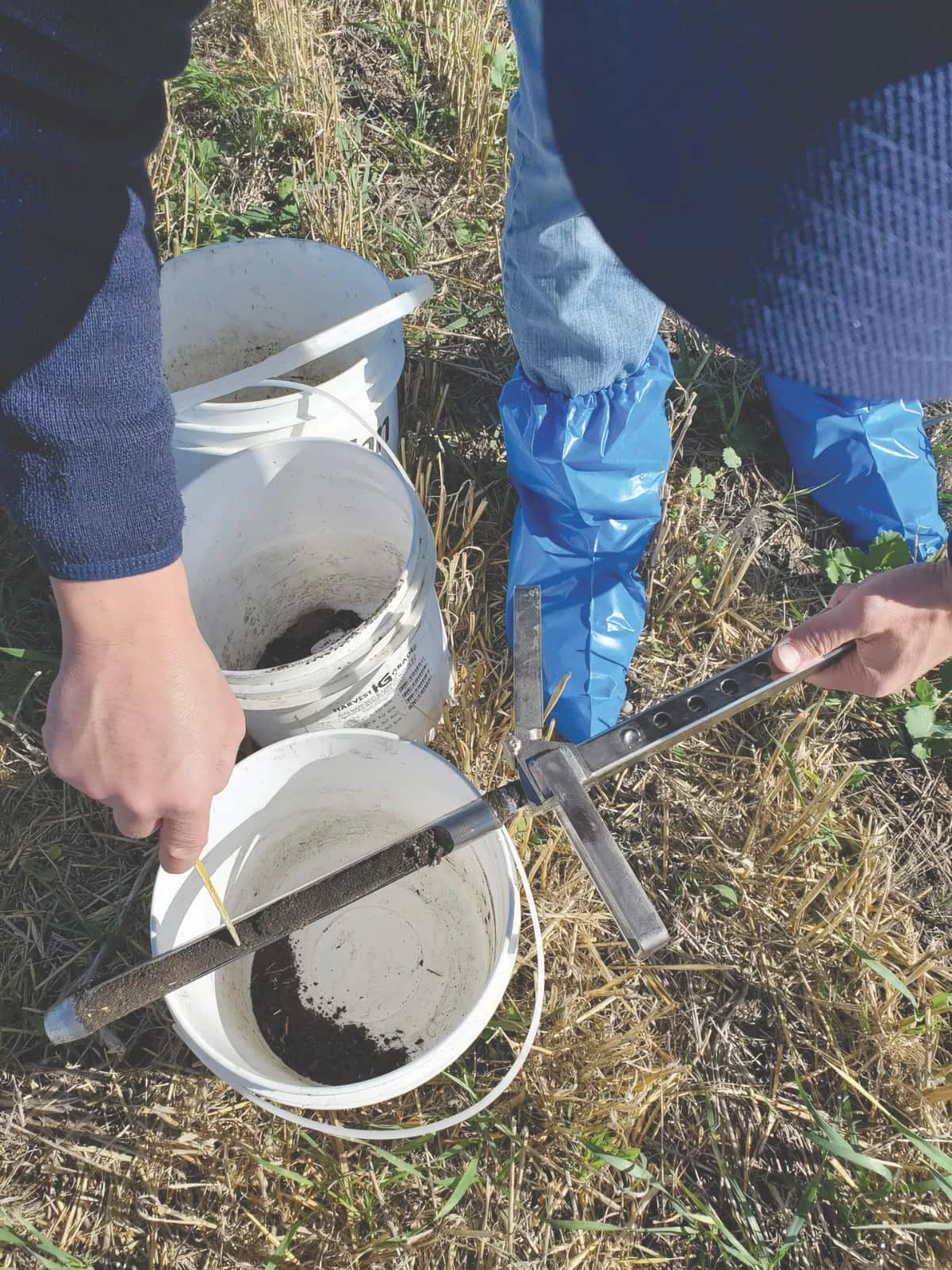A cost-effective way to crank up your composite soil samples
By Warren Ward
The most common soil sampling practice is to collect one composite sample per field. This article will describe a low-cost way to take your composite samples to a new level.
Soil sampling - divide cores based on depth - CCC. When soil sampling, divide each core into two or three soil depths and put them into separate pails. Submit separate composite blends for each depth.
An appropriate composite is based on 12-20 sub-samples or “cores” collected from the most productive areas of a field. (See the sidebar for more specific instructions.) These are usually mid-slopes. For this one primary composite sample, you want to avoid collecting from hill tops, low spots and saline areas. This mid-slope composite will help you select an appropriate fertilizer blend and rate that supports those most productive areas.
However, by avoiding the low-producing areas – the hill tops, the low spots – you may be missing critical insights to boost yield potential in those areas.
You can’t blend samples from low-producing areas into your primary mid-slope composite. The resulting average will produce soil test results that are almost useless. So you need more samples. The extra cost of a second, or third, targeted composite from that field may reveal some interesting issues that could be solved, or at least improved, with localized management.
A few potential target sample sites:
An area always subject to lodging. Does it have high organic matter that kicks out a lodge-inducing nitrogen boost? It may be possible to reduce nitrogen rates in that area.
Hill tops. High ground often has low organic matter and retains less moisture. These factors will reduce yield. But perhaps low sulphur, or some other nutrient shortage, is also a factor in lower canola yields. Some targeted sulphur could help hill tops.
Low areas with low yields. Is salinity the problem? Or something else? With a targeted sample, you may find a low-yielding area critically low in potassium, for example, while salinity is fine. You never know until you test.
As shown in these three examples, targeted samples could prompt some low-tech, targeted nutrient applications that could boost yield results. With a few hundred dollars’ worth of extra samples, you could greatly improve the productivity of acres not benefiting from the blanket nutrient application based on one primary composite sample from your top-producing mid slopes.
–Warren Ward is an agronomy specialist with the Canola Council of Canada. To learn more about soil sampling, check out the nutrient management chapter at CanolaEncyclopedia.ca, or the Canola Watch fundamentals article “Soil sampling – timing, technique, interpretation” at CanolaWatch.org.
Composite sample techniques
Here are the steps to collect composite samples from a field. If hiring someone to collect your samples, they will usually follow this practice:
Take 12-20 sub-samples or “cores.” If just doing one sample per field, gather these cores from the most-productive areas. This is usually mid slopes. If you are also targeting a problem area with a second composite sample, collect a separate set of cores from that specific area.
Divide each core into two or three soil depths and put them into separate pails. Have a pail each for 0-6” and 6-24” soil depths, or a three-way split of 0-6”, 6-12” and 12-24”.
With the 12-20 sub-samples separated by depth, blend those samples to create one composite sample per depth. Do not blend these with your second set of composites from a targeted area. Keep them separate.
Submit each composite and each depth in its own sample bag.
The benchmark composite: Farms could GPS-locate one “average acre” in the field and use that pin as a sample point each year. This can provide for more accurate comparison of samples year after year and is faster for the sampler.

